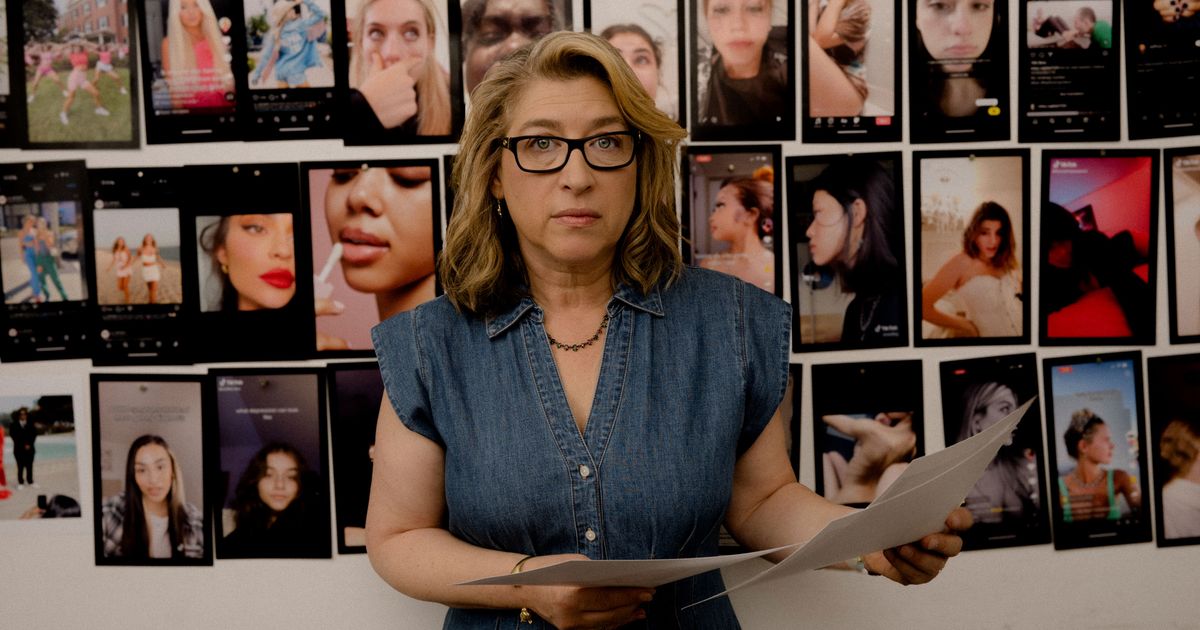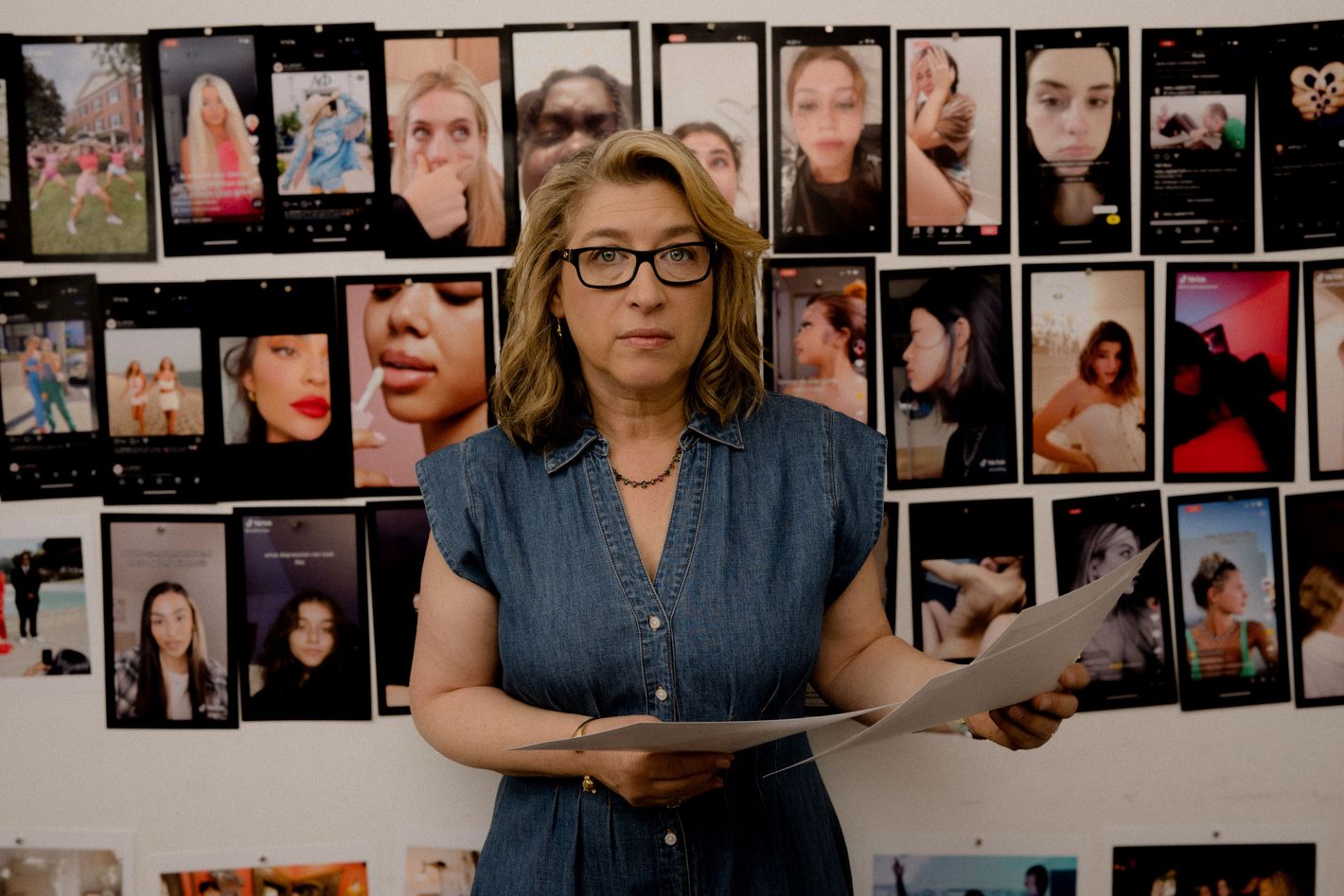Lauren Greenfield Goes Back to High School
The director of ‘The Queen of Versailles’ watched 2,000 hours of teens’ screen time. What she saw shocked her.


It’s a Monday morning, and the documentarian Lauren Greenfield and I are at the Robert Frank exhibit at MoMA. She’s in town for some talk-show appearances but didn’t want to miss it — it was Frank’s photobook The Americans that inspired Greenfield to pursue photography in the first place, she says. “This looks like outtakes from … well, actually I’m not sure,” she says, gesturing to a contact sheet. A gaggle of teenage girls enters the gallery and gathers around one of their phones. Their voices mix with the operatic score of a film in the exhibit; it’s distracting enough that we decide to head downstairs for a coffee. In the museum cafe, Greenfield points out the abundance of cords sprouting from the bar along the picture windows. “Look at this: It’s all phone chargers,” she says.
This — teens, phones, teens on their phones — is roughly the subject of her new FX docuseries, Social Studies, which follows the online and offline lives of high-school students in L.A. Each of the five episodes centers around a specific theme related to online life: bullying and body image, race, social mobility, fame and entrepreneurship, social comparison and mental health, sex and relationships, and college admissions. Over the last three decades, Greenfield has become one of our most prominent chroniclers of wealth and striving; she watches her subjects with a sort of gentle, ironic detachment. Her 1997 photography book, Fast Forward: Growing Up in the Shadow of Hollywood, was about L.A. teenagers affected by image, celebrity, materialism. Next came Thin, which followed young women in a residential treatment center for eating disorders, then her massive hit, The Queen of Versailles, which studied a couple singularly obsessed with building the largest home in the country (and which is coming to Broadway — as a musical starring Kristin Chenoweth — in the 2025-26 season). Greenfield sometimes uses her own life as source material — Fast Forward came out when she was barely a decade out of the Santa Monica prep school Crossroads. “This time,” she says of Social Studies, “I was the mother of two teenagers.”
When Greenfield’s sons were younger, her husband, Frank Evers, left his corporate job running Disney Interactive to become a stay-at-home parent; this way, Greenfield could travel the world for magazine photojournalism assignments. (The two originally met at Harvard. He came to the school from Ireland as a pole vaulter majoring East Asian studies, and she studied film and photography.) She worked constantly, from the time her oldest, Noah, was 10 weeks old, when she pumped liters of milk so she could take an assignment from Time to document the lives of wealthy kids in China. While shooting Generation Wealth, her 2018 documentary about wealth obsession and social comparison, Noah confronted her about her absence during his childhood. “A big part of that project ended up being me taking a look at my own workaholism and making connections between some of the addictive behavior I documented with other people and my own kind of compulsion to work,” she says.
Two years after that film premiered, COVID hit. She decided to take a break. To her mind, the pandemic was “a rock-bottom moment where you have an opportunity to reflect and make change.” She also got a closer look at her sons’ day-to-day lives and quickly became concerned about her younger son Gabriel’s screen time; he was getting all his news from TikTok, she says, and seemed “depressed and ornery” after hours on the computer doing virtual school. The family made a decision to temporarily move to Canada, where the COVID numbers were then lower; Greenfield could direct commercials, and Gabriel could do school in person. “We noticed a positive change in him right away,” she says. Curious about how other teenagers’ screen time affected their real lives, she set up virtual meetings with students of the film teacher Malia Jakus at Palisades Charter High School, a Los Angeles school she chose for its diversity. Gabriel thought these interviews wouldn’t yield particularly interesting material; no teen would ever let her peer into their online worlds. He was wrong — Greenfield says the students seemed immediately relieved to have someone to talk to about their virtual lives. “I think there’s a burden that kids are holding about this secret life that they can’t tell their parents about,” she says.
We go back upstairs to the exhibit and pick up where we left off. “The other thing about Frank,” she says, “is he was this outsider coming to America, and I’ve always been very interested in the insider-outsider perspective. When I went to Crossroads I didn’t really feel like I fit in, because at that time it was very entertainment-y, and my parents were professors. But I ended up making it my own.” Her alma mater was her starting place for Fast Forward in the ’90s, before her pool of subjects widened. Something similar happened with Social Studies: Her original cohort introduced her to their friends, their siblings, their boyfriends and girlfriends, other kids they knew from after-school activities. Soon, she’d talked to nearly 200 kids. She narrowed it down to a smaller group, private- and public-school kids both. “Some had gone viral or were online all the time, Sydney had a slut-shaming incident, Jack and Keshawn were using it for their businesses, everyone was bringing something different. We decided we’d hold group discussions on specific subjects and then also film the kids in their day-to-day lives for 150 days straight.”
In the group discussions, she was surprised by the uniformity of the kids’ experiences. “When somebody talked about eating disorders, four other girls would chime in,” she says. When she asked the students who among them had received a nude photo, “everybody raised their hand except one kid.” One day, the kids started talking about BDSM, and Greenfield “was shocked to hear about the choking trend and how ‘people think vanilla sex is boring and so you have to have kinks,’” she says, paraphrasing what the teens tell her in the fourth episode. That night, she asked her sons at the dinner table if choking was something their friends talked about. “They were like, ‘Yeah, that’s what we hear girls want.’” As she spent hours a day hearing about the consequences of other kids’ addictive phone behaviors, she and Evers became more worried about Gabriel’s. “We started asking that he show us his hours every day, and if it was too much, then we would ask him to take apps off of his phone,” she says.
“I don’t want this to be an ‘issues’ film,” Greenfield tells me. But she also mentions that the very next day, she’s scheduled to go on The Drew Barrymore Show with the surgeon general, Dr. Vivek Murthy, to talk about what she saw in her footage. The project feels well-timed, she says — Murthy recently advised some schools to limit or restrict phones at school, and he also suggested a warning label for social media like the ones found on cigarettes. She’s watched 1,200 hours of footage and 2,000 hours of screen-recorded social media over the past two years, now that both of her sons have moved out. She wants to have a screening in San Francisco and invite tech companies to watch, to see what they’re doing to America’s teens. “I mean,” she says, “If you have any kind of tendency toward being concerned about your body, not even a full eating disorder, the algorithm will take you by the hand and say, ‘Do you want to have an eating disorder? Let me show you how.’”
Related








